Last Updated on December 19, 2012 by stevehoggbikefitting.com
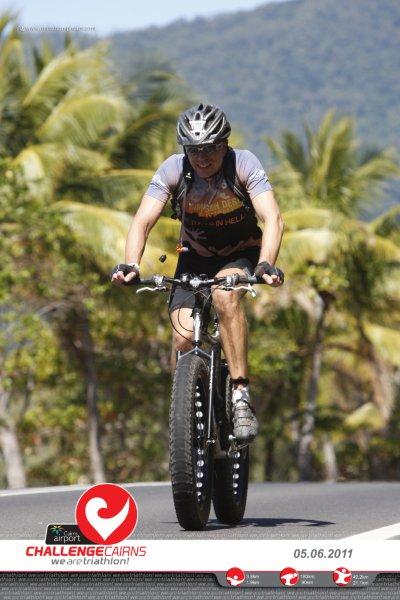
We have a customer named Alan. Alan won the Simpson Desert Race in 2009. The Simpson is one of the toughest things that can be done on a bike. It’s a 5 day mtb stage race across the Simpson Desert with 6 or 700 sand dunes. Many of them are 20 -40 metres high. The idea is for the rider to get as much speed going down one dune as possible and then, when momentum is spent on the next dune, jump off the bike and carry it over the rest of the dune in soft red brown sand. So in places, the race is as much about running in soft sand while carrying or wheeling your bike as it is about riding. Very hard work!
Alan isn’t your typical mtb XC racer. He’s 6’3″ and about 90kg. Training partner and fellow lunatic Alex Descantes, calls him “The Machine”. So anyway, a bloke with a physique unsuited to the event beats all the skinny greyhounds and wins the race but smashes himself in the process. Not content with that, he decided to go for glory again in 2010. A big bloke like Alan doesn’t get as far up a soft sand dune as the lighter riders before bogging down, and sick of running in soft sand while carrying a bike, decided a Fatback from Speedway Cycles in Anchorage Alaska would be the secret weapon. A Fatback is a rigid mtb with 4″ wide 29’er tyres that Alan runs at 5psi front and 9psi rear. Alan’s idea was that the large tyre footprint and low pressures would allow him to ride over the dunes without getting off to run. Fatbacks are NOT light.
Alan didn’t really fit the standard Fatback sizing chart so we designed a custom ti Fatback which Alan ordered from Alaska. CAD drawing below.
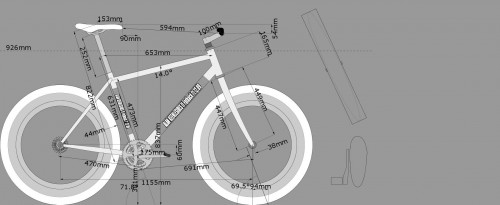 The bike duly arrived and Alan was happy. The bike weighed a ton but Alan didn’t care because he knew he would be coasting over dunes while all the other Simpson riders would be slogging up them on foot with sand in their shoes.
The bike duly arrived and Alan was happy. The bike weighed a ton but Alan didn’t care because he knew he would be coasting over dunes while all the other Simpson riders would be slogging up them on foot with sand in their shoes.
Things didn’t quite go as Alan had planned. Last year the Simpson was in flood! This is a rare occurrence. The race was moved and was a Simpson Desert Race in name only. Alan and the Fatback didn’t do so well. Alan bought the bike with a single purpose in mind and the alternate course didn’t suit that purpose.
This must have got to him a bit, and needing a challenge, he entered the Cairns Ironman triathlon on the Fatback.
Alan didn’t have the slowest bike time either. And he finished the race. Not in a great time but
Alan says that the bike leg took a lot out of him. Hardly surprising.
I don’t know whether finishing an Ironman while doing the bike leg on a Fatback is a first, but it signals that The Machine is back and is in training for a tilt at the Simpson again. Alan is hoping for the normal desert drought conditions with as soft a sand as the Simpson can provide. Wish him well.
What is the moral to this story?
I’m not sure that there is one, other than a tough bastard named Alan Keenleside is on the hunt for a race win come late September and will go to any lengths to train up for it. I like the attitude though.
If things don’t go to plan at the next Simpson, Alan plans to enter a 4 man team for 2012. Pic of the team bike below. It just needs knobblies fitted.
.
Note: Often, more specific answers to your questions can be found in the Comments below or in the eBooks section and FAQ page.
To learn more about bike fit products offered by Steve, click here.
Do you have a bike fit success story? Please go here to share.
Thank you for reading, return to the Blog page here or please comment below.This Post Has 11 Comments
Comments are closed.


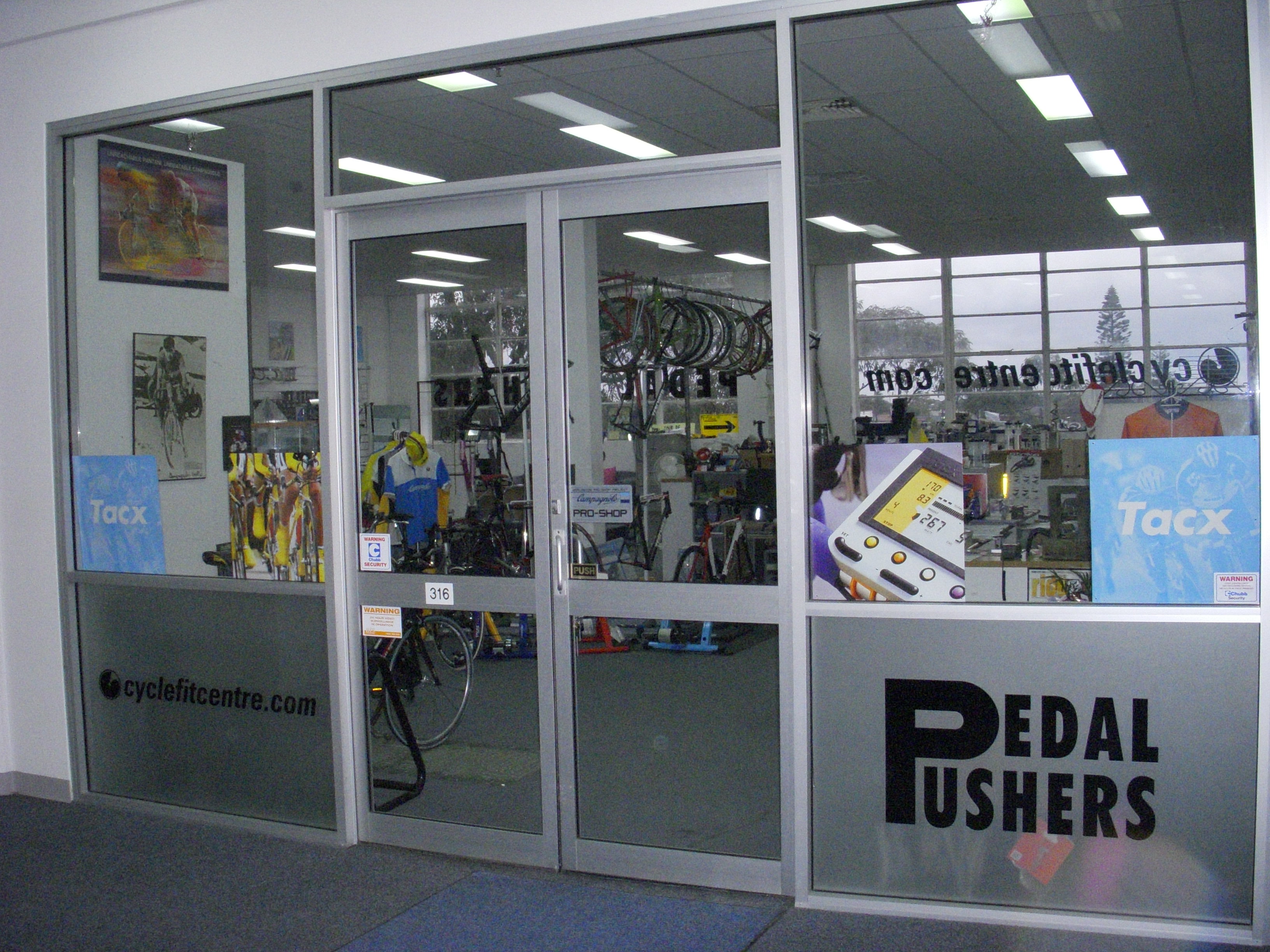

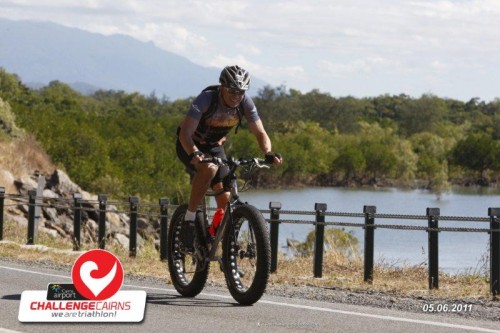
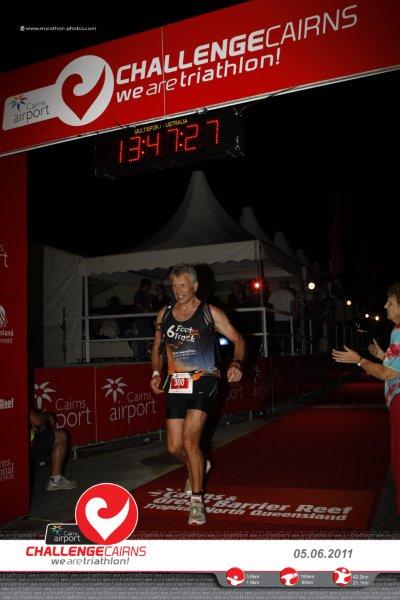



Speaking of tri bike design, Steve, are you planning a post on tri bike positioning? My recollection is that your view differs markedly from the current “Slowtwitch” mainstream view. Thanks.
G’day Craig – Steve does have some Tri related posts in the works… He’s a busy man, but stay tuned! I’m sure they will lead to some good discussion.
G’day Craig,
Yes, it is coming, though the thrust will be more about
whether aerodynamics is more marketing hype than performance necessity. It
will also include Tri bike positioning and TT positioning because they are
not the same thing. It will take a few weeks to get to it because I’ve a lot
going on at the moment but it is planned.
Also keep an eye on the Articles section in Publications. There’s an article
bookmarked but not uploaded yet named Foundations of Positioning that is
about just this subject. It was written a few years back and I need to edit
it slightly to make it more current. Between that an the upcoming
Aerodynamics post, I think you will be happy. If not, you can tell me why
and I’ll try to respond.
Thanks Steve – I will try to be happy … or have a beer or two and then I will be happy!
As long as their quality. Then you won’t need many. I think I’ve started the
corruption process on Jason who manages the site. Last I heard he’d drunk a
bottle of Chimay Cinq Cents as his first foray into quality beer. And liked
it!
Drunk is the key word there… No, but if you notice more and more mistakes on the website you’ll know the reason.
Chimay Cinq Cents is now one of my favourites that Steve has introduced me to! Quality not quantity eh Steve.
G’day Darren,
I agree. Alcohol is poison. If I must imbibe poison, it may
as well be high quality poison. What turned out to be your favourite of that
lot?
Glad to see Thurston got off and the Maroons will be at full strength for
Origin 3. Tell your neighbour Matt Scott not to play too well! I’ll tell
Hulk Taylor the same.
A word from an alternative practitioneer/naturopath about alcohol being a ‘poison’: self-made, for anyone ingesting a handful of grapes, fruit salad or the healthy apple-a-day produces alcohol in his bowel. During my practice I meet patients who although had never drunken any alcohol still have a medically proven cyrrhotic liver. It turned out that they had 20+ apple trees in their garden and profitted happily from its fertility in terms of fermentation. Apple juice (every day), apples (in the season), winter apples (in the off-season) and so forth. Mind you, none of the apples or trees had been chemically treated. At times, notorious salad munchers are not much better.
Conceivable wisdom: everything can be poisonous if used too often or in bulk…
Back to the topic: aerodynamics in triathlon an overestimated religion?
Nope. Only if every athlete uses the same gear. If for example he uses just smaller wheels the changes are dramatic. Not only in Kona.
Stay tuned,
Götz
What are you talking about Mr.götz?
1. In living systems poison is a question of quantity.
2. Alcohol is not necessarily a poison, its a natural result of intestinal fermentation (vegetables, fruits, cereals).
3. Whether it is poisonous or not for the producer’s organism depends as well on its quality as on the amount of enzymes present in the liver to break down and neutralise its side products/left overs.
This applies to many other products of our metabolism likewise.
Ketons for example are a (natural) side product of the fat metabolism and not necessarily poisonous. Although regarded as metabolic trash trained men use it as a highly nutritious fuel for his muscles.
Same applies to lactic acid, a metabolic waste of the sugar metabolism. Again its n o t a poison in the first place but a source of energy for trained athletes.
More important than the quantity discussion is quality. Its even decisive when it comes to evaluate these ‘spices’: too much of either of them in the blood stream or certain chemical configurations are more likely to become a hazard to its owner’s/producer’s health – his kidneys, liver, blood vessels and other organs. Not enough of them and no reaction takes place at all.
Like Steve claims: In many cases its the little things which can make the big difference. To apply them responsibly is the job of those skilled to the art.